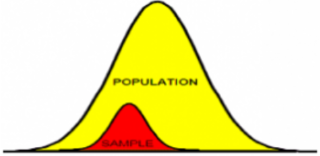The word statistic is distinct from the word parameter. Statistics go with samples, and parameters go with populations. Statistics are estimates from samples and used to predict a parameter about the true population.
Population Parameters
There are 1,422,967 soldiers in the US armed forces. These 1,422,967 represent the US armed forces population. The US military has a record of each member. That record includes several types of information, one of which is a soldier’s birth date. Therefore, the military can calculate the average age of the military very precisely. A measure that is based on every member of the population is called a parameter. The average age in this case is called a population parameter.
Sample Statistics
There are some measures that are not practical to calculate for each member of the US armed forces. For example, what if one wanted to know the average number of hours a soldier in the US armed forces sleeps each night. It would be impractical to ask that question to each of 1.4 mil members of the armed forces . In this case, it is more practical to take a sample. A sample is a subset of the population. Lets say we ask 1000 members, how many hours a night they slept and found the average was 6.4 hours. Here we have estimated the sample statistic. The average number of hours slept of 6.4 hours is a sample statistic. When certain conditions are met, we can infer that 6.4 hours is representative of the population. Now we have used only a subset of the information and concluded something about all 1,422,967 soldiers. We have used a statistic to concluded something about the population.
This technique falls in the domain of inferential statistics. It enables good deductive reasoning. The power of inference is fundamental to the predictions that businesses perform every day.
Related topics that we will explore in more depth are tests for statistical significance, confidence intervals, and distribution curves.
